|
|
|
Early winter greetings to all readers,
It is "shiwasu" season again!
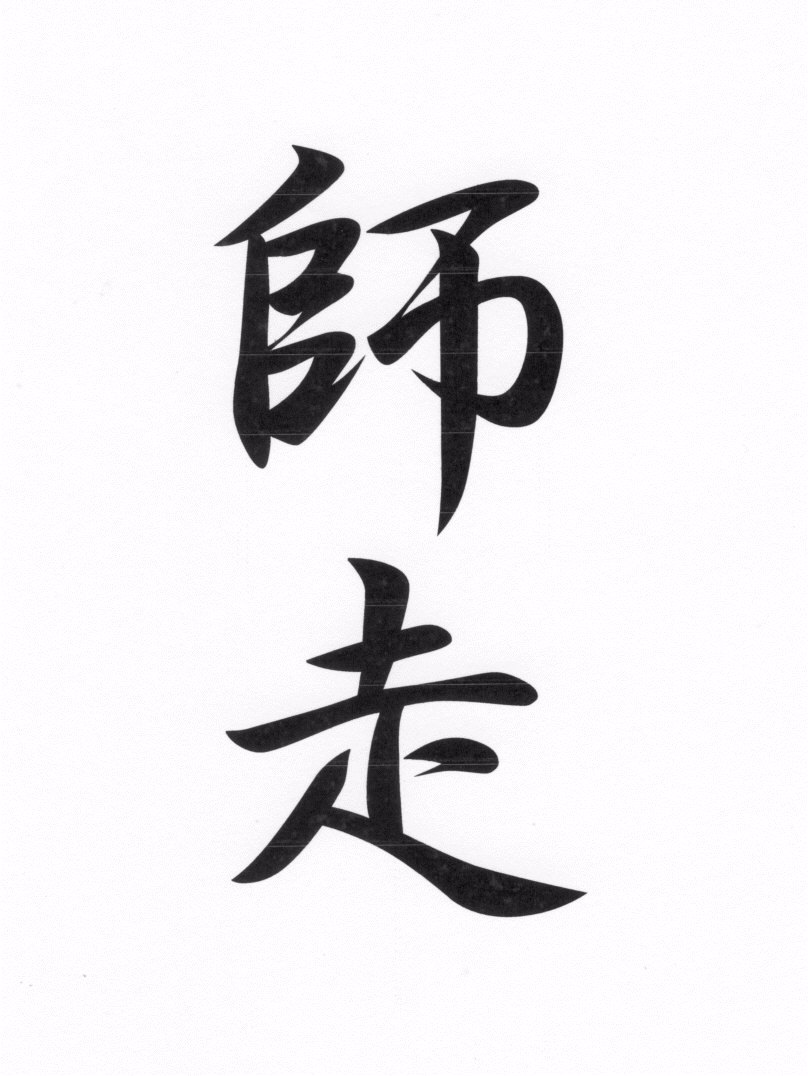 |
|
As I do each year, I am beginning the December newsletter reminding readers that the traditional name for the final month of the year is "Shiwasu," the characters of which (shown here) mean "teacher" and "run," with the implication being the end of the year and the attendant holiday season is so busy for everyone that even the teacher is running around, as there is too much to do to delegate to his or her subordinates. I dunno; I just like the imagery in conjures. Almost as if we are all busy, but at least pleasantly so at this time of the year. And again this year, I was struck by how remarkably – nay, verily impossibly – quickly the past year has gone.
May this final newsletter of the year find all readers well. Here in Japan, the sake-brewing season is moving along, with a few rice-supply problems, and the heat of the past summer showing its flavor-restraining effects at this early stage. But brewers everywhere are already offering their shinshu (new sake) for the year. Indeed, in the sake world as well, 'Tis the season!
The Sake Professional Course in Japan, to be held January 21 to 25, 2013, has checked in full. The next one will be in the US in the spring, although the exact dates and venue have yet to be announced. Stay tuned!
Any day now, the inaugural edition of the first sake-only English language magazine,
Sake Today, will be released. I will send a special "Exra Extra Read All About It" notice when things are finalized, letting you know where you can get both physical and electronic versions. Readers' support is what will make this puppy fly! Until then, you can follow us via the usual suspects of social media.
 |
|
If you really want to learn about sake, rather than reading some stodgy newsletter, get to Japan and visit some kura. That is the way to do it! And this coming year offers more opportunities than ever, especially through Sake Tours The trip to Niigata is already full, but the trip to Okayama will be a great one this year! Learn more below.
Happy holidays to all, and please enjoy the newsletter.
John
|
|
Sugidama
Sake Lore of Olde
There are certainly a great number of symbols in the sake world; images and artifacts that evoke perfectly Pavlovian pangs for a glass of good sake. It might be a blue-dyed curtain hanging in front of a sake shop, invitingly waiting to be parted by your own hands as you enter. It might be the rising smell of yakitori (grilled chicken on skewers, a standard sake accompaniment) or just the right fruity or flowery essence reminiscent of a good glass of ginjo. Or, it might be a sugidama, arguably the oldest and most often-seen sign of where sake is to be found.
Certainly you have seen them hanging around (pun intended): green or brown spheres of tightly bound leaves suspended by a cord, dangling in front of sake shops and pubs. A quick glance at the photos here should evoke a "Oh, those things! Yeah; I’ve seen them…" response from many readers. While in the past, they might have only been visible in Japan, now many shops outside of Japan sport one out front as well, and certainly we can see images of them all over the internet.
Sugidama originated in the Edo Period (1604 to 1868), and have taken many shapes and sizes over the past centuries, sometimes appearing more like bales or bound stalks of thin branches. As the pictures here show, they are always spherical these days.
What are they, these sugidama? Also known as sakabayashi, they are - as they appear to be - balls constructed of the needle-like leaves of the sugi, or Japanese cedar tree. (The more precise name for this tree is, actually, cryptomeria, and it is botanically closer to cypress than cedar, although it smells damn like cedar to me.)
The sugi holds religious significance in the Shinto religion, particularly in connection with a shrine named Miwa Jinja in Nara Prefecture, wherein resides a deity related to sake. Although today not all sugidama are made from sugi boughs from this shrine, it certainly is one traditional source.
Possibly related to that religious influence, it was in the past said that if the needle-like leaves of sugi are soaked in sake, that sake will not go bad. But there is more to the story than that.
Until about 60 years ago, tanks for sake brewing were made of this wood, (now they are ceramic-lined steel) as are the casks called taru in which sake was formerly shipped (before bottling came along), and the small boxes called masu traditionally used for drinking sake (and measuring rice). And beyond these uses, the walls of most traditional koji-making rooms as well as the trays used to make koji were all almost always made from sugi.
Why sugi over other woods? There are of course a handful of reasons, but the most often presented is that sugi tends to not impart its woodiness to the sake or the koji-in-waiting.
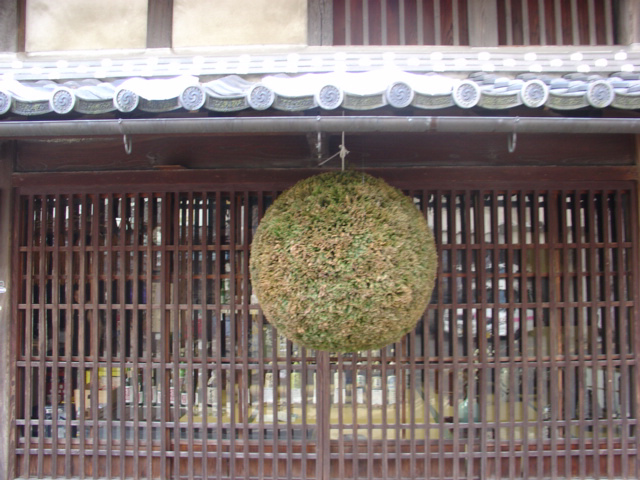 |
|
As a rule long ago, but still commonly today as well, sugidama are hung just outside the front entrance to a sake brewery immediately after the first sake of the year has been pressed (like - now!). At this point, the leaves are still green, having been recently cut and used. Over the next several months, however, the green needles slowly faded to brown. It has long been said that when at long last the color had changed to brown, the sake had aged enough to be ready for drinking.
These days, lengths of maturation vary greatly on style, region and other factors, including modern climate control. But the sugidama cares not, fading from green to brown in its own time, as it always has.
Although accounts differ subtly from source to source on the details, the above is the basic gist of the saga of the sugidama. But it has evolved in its use, if not its symbolism. Today, sugidama appear not only in front of kura (breweries), but also in front of sake retail shops, as well as sake pubs and other places serving sake all over Japan, and even a few appear in other countries as well. It is basically an enticing indication of “sake within!”
Often, I have wondered how they were actually made. My inquiries were met with, “Ya just keep stuffin’ more and more sugi leaves in there, and trim it ‘till it’s round enough…” But only recently did I see a work in progress when visiting a brewery that was just about to press its first batch of the year.
In the old days, the experienced guys would ball up a bunch of boughs and stuff everything else into that. These days, many if not most use a ball of wire or styrofoam at the center. As you can see from the photos here, someone just sits amongst fermenting tanks with a bunch of fir sticks around them, stuffing them into a globe and trimming it to a round aesthetic perfection. I was genuinely surprised to see it was that simple.
Let's get started!
Note the white ball of
traditional styrofoam in the center. ;-)
The finished product!
One of the most charming sites of winter - if you are into sake - must be a sugidama with freshly fallen snow resting on the top. If it doesn't evoke an inner warmth, try viewing it with a glass of sake. It soon will.
|
|
Listing Rice Varieties on Labels
and the attendant hassles
 |
|
There are about a hundred different types of sake rice used in making sake. About. But not all sake is made from
shuzo-kotekimai, or proper sake rice. Most, in fact is not. But almost all premium sake is.
And of that hundred, about a dozen are commonly seen and important. Add to that another several dozen varieties that are not proper sake rice but suffice well enough to be used in brewing decent sake.
However, sake brewers are not obligated to tell you which rice was used in a given sake. No one really hides it. It is just that from a marketing perspective, it had long been considered superfluous information. It is not really that way anymore, especially in top-grade sake. The rice is indeed important!
The other side of that coin is that, although they are not obligated to tell you the rice, if they want to do so there are rules and regulations about what can in fact be listed. As a quick example belying a Pandora’s Box of vagaries and issues, they can use a perfectly good rice grown locally, but if the local agricultural co-op has not agreed to register and inspect that rice for local production, the name cannot be listed on the label. But let’s back gingerly away from that chasm of a diversion, at least for now.
Let us look instead at another aspect of sake labeling. In short, if a producer chooses to list the rice on the label, they must also list what percentage of the total rice in that batch corresponds to that rice. For example, “made using 100% Omachi,” or “75% Miyama Nishiki and 25% Yamada Nishiki.”
The point and reasoning is to prevent a brewer from making a tank using some schlock rice and lobbing one grain of superb Yamada Nishiki in there, and then bragging on the label, “made using Yamada Nishiki!” Not that anyone would really do this. But you know…
Also, generally speaking, the blending of rice in a single batch of sake is not common. It is much more commonly seen than it used to be, but still it is not common. Why not? Because different rice types behave differently, they dissolve and break down and make their mark in different ways. If you have two rice types doing their thing together in one batch, predictability suffers. Heck, any one rice type behaves differently each year – and even from batch to batch in a single season! Many brewers feel they are unnecessarily complicating matters if they use more than one type in a given tank. Again; it is not unheard of, just not common.
And when we do come across more than one rice used, it is most common that one (the superior) rice is used for the 25 percent or so of the total rice that is made into koji, and another (lesser) type for the remaining 75 percent that is straight steamed rice added to the batch. So a 25/75 split amongst two rice types is something we do see from time to time on labels.
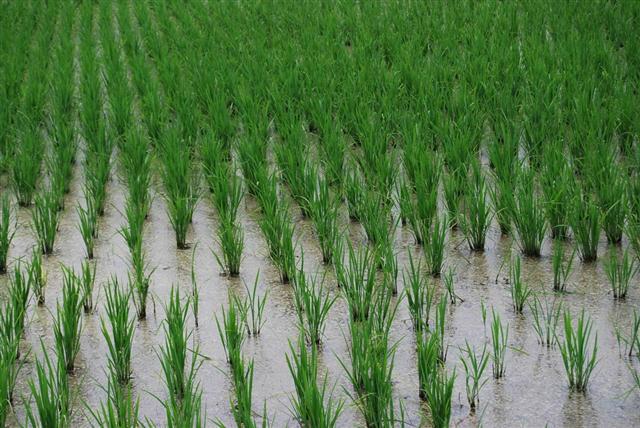 |
|
And that is the point here: that whatever the brewers choose to use, if they choose to tell us, they must document it properly on the label. But then, there are problems related to the fact that rice is an agricultural product subject to the laws of Mother Nature, who does not bother to check with brewers about their plans for the upcoming year. Nor does she seek approval for weather patterns. As such, from time to time shortages exist (for other reasons too, like demand) and brewers do not always get what they ordered, or when they ordered it.
This fact can cause hassles for brewers when they choose to list the rice on the label.
Quickly summarizing the issue, let’s say a brewer makes ten tanks of a given sake, and the very last one of those ten was partially made with a rice different from the rest because “what was ordered did not come in.” When those ten are blended for consistency across that year’s product, the entire batch becomes “tainted” with the one single one made even partially with a different rice.
Will this perceptibly affect quality or flavor? No. Of course not. But the brewer would still be legally obligated to note this on the label, with something like “99.5 percent rice A and 0.5 percent rice B.”
I had this complaint vociferously explained to me by an ornery brewer a few years ago, a conversation I documented here . Yet, I had never once seen a real-life example of such confusing labeling. So, I assumed, the problem exists in theory alone. Until now.
A couple of weeks ago I was visiting a brewer in the historically as well as currently significant Aizu-Wakamatsu region of Fukushima Prefecture. And while tasting their lineup, I spun the bottle to see the gory details on the back label. And there it was.
It read: “Yamada Nishiki: 94%, Gohyakumangoku: 6%”
The natural reaction would be, why would anyone do that? Why would a brewer use 94 percent of one rice, and but 6 of another? The answer was clear: the rice wasn’t available. But it played out a bit differently than I had thought it would.
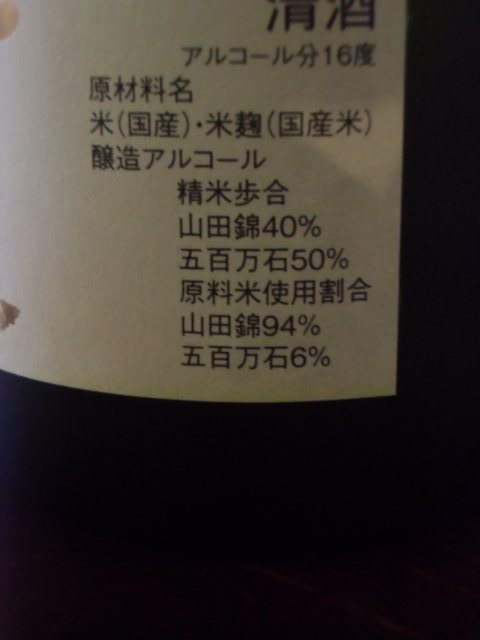 |
|
Upon inquiring, I was told that this particular batch of daiginjo was to be made with 100 percent Yamada Nishiki. However, when the day came to start the batch, the rice was not there. “Well, why not just hold off a week or two to start that batch,” one might ask. Unfortunately, it is not that simple. To delay things would push into disarray the whole flow of the subsequent batches, the timing of the steps of which are put together like a jigsaw puzzle. It could also push the brewing of that particular batch late enough into the season that the higher ambient temperatures would have their say in things as well. Et cetera. Ad infinitum. Ad nauseum. So, no; it is not that simple.
But only six percent? Why? Enquiring minds want to know! And so I enquired. And the answer was simple enough: the moto; i.e. the yeast starter.
In other words, the very first step of making a tank of sake, as readers likely remember, is the yeast starter, called the moto (or shubo). The amount of rice that goes into this mini starter batch is about six percent of the final total. And it takes two weeks to make.
So they had a situation in which the Yamada Nishiki rice they wanted was not in, but they had to get started. So they made the yeast starter with what they did have, a perfectly respectable sake rice called Gohyakumangoku, and two weeks later when the Yamada Nishiki they had ordered came in, they continued on with that. Final tally: Gohyakumangoku 6 percent, Yamada Nishiki 94 percent. And being the up-and-up scrupulous brewer that they are, they duly represented it properly on the label.
In the decade since these rules were put into place, this was the first time I had come across an actual example. So I do not think most folks will need to worry about it. But should you come across a listing of multiple rice types, the ratios of which seem curious, consider the rice supply story behind it. Just don’t consider it for too long.
|
Sake Brewery Tours in Japan, 2014
Here is the latest from Sake Tours :
 |
|
As we expected, even sooner than we expected, the Sake Tours excursion to Niigata has checked in full. But you still have a chance to experience a sake-brewery focused tour to Japan this coming year! Sake Tours will go to Okayama Prefecture, January 27th - 31st.
The Okayama tour combines sake, food, and art with visits to beautiful classic towns.This tour especially highlights sake with four (count 'em!) kura visits as well as cultural activities to which even locals do not have access. Some very memorable experiences you will find only with us are: a session with an Omachi sake rice grower, hands on rice field plowing, a private Kagura dance performance, a private Shiki Hocho knife ritual once performed only for the emperor, a hands-on guinomi sake cup making experience with Bizen artists, observing the art of sword making and more. On the last day, simply relax at the hot springs by the river far away from the city, in the snow.
Remember, this time the Japan Sake and Shochu Makers Association is supporting part of the cost. They invite all sake enthusiasts to really experience Japan through sake with their help. This is a one-time opportunity you cannot miss!
The tour cost is 270,000 JPY per person. With 50,000 JPY support from Japan Sake and Shochu Makers Association, your cost is only 220,000 JPY.
Please visit http://saketours.com for tour information after September 15. Group size is limited to 12.
Send an email to info@saketours.com for more information.
|
 Announcements and Events Announcements and Events
Sake Professional Course in Japan
January 20 to 24, 2014
...
has checked in full!
The 2014 Sake Professional Course in Japan will be held from Monday, January 20 to Friday, January 24, 2014. This is
it - the most comprehensive and intense sake educational program on the planet. Three days of class and tastings, sake pubs and izakaya at night, and two full days of sake brewery visits.
No sake stone remains left unturned!
And, it has checked in full this year. Thanks to those 25 who will be participating. The next course will be held in the US in the spring, but the dates and venue are as of yet undertermined. Please stay tuned for more information soon.
~~~~~~~~~~~~~~~~~~~~
Sake Education Council Website
Please take a moment to check out the website for the Sake Education Council, the organization behind the Certified Sake Professional and Advanced Sake Professional certifications. We plan to grow steadily, strongly and continually, and we will need the support of all those that love sake to do so. Follow us through the "usual suspects" of social media.
Don't forget the archives!
Older editions of this newsletter are archived here.
Really old editions are archived here.
|
 Sake Education Central Sake Education Central
Sake's Hidden Stories and The Sake Notebook are now available for the Kindle, Nook and iBooks!
The Sake Notebook is now available for the Kindle as well as the Nook. And now, it is available for iBooks on iTunes as well!
Sake's Hidden Stories too is now availabe on the Kindle as well as the Nook. And now, it is available for iBooks on iTunes as well!
Both are
less expensive than their original pdf version too. Now is your chance to learn more about sake from your phone or tablet! Check 'em out!
Sake Dictionary App for the iPhone, iPod and iPad
"For 99 cents, this app ROCKS!!"
-a satisfied customer
There you are, perusing a menu, or standing in front of a shelf of great sake, or perhaps reading a sake newsletter… and up pops one of those hairy, pesky sake terms in Japanese. You know you have heard it many times, but dammit, you just cannot remember what it means now…
No problem! Just whip out your iPhone or iPod and fire up your trusty old version of
The Sake Dictionary. In a matter of seconds, you’ll be amongst the cognoscenti once again. But… if only you could pronounce it properly. Now that would really rock!
Done! Just tap on the term and you will hear a clear example of how to pronounce the term in Japanese. Repeat it a couple of times and the term is yours for eternity, to toss about and impress your mates.
What’s more, it’s
less!
Less than what it cost before, much less. Like less than one-seventh less. For a limited time only, the audio-enhanced version of The Sake Dictionary iPhone app is available for a mere $0.99.
|
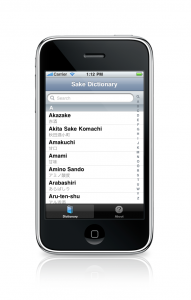 |
|
|
The Sake Dictionary is a concise little package of all the terms you might ever come across when dealing with sake. Almost 200 of them - including sake grades, rice variety names, seasonal sake terms, special varieties, rare types, post-brewing processing words and the myriad terms used in sake production - many of which are not even familiar to the average Japanese person on the street - are listed up here with concise, useful and clear definitions and the written Japanese version as well. And now, with the new audio component, you can listen and learn just how to pronounce those terms properly.
Start to toss around Japanese sake terms like you were raised knowing them! Gain a level of familiarity hitherto unimaginable! Avoid frustrating paralysis when faced with a sake-related purchase!
Get your copy of The Sake Dictionary now and never be confused by sake terms - or how to pronounce them - again.
Get it here: http://itunes.com/apps/sakedictionary
(Note if you have already purchased it, this upgrade to the audio version is free. Just go to iTunes and get it!)
|
Are you not getting this newsletter? I realize that is like asking that
"those not present please raise your hand," but for future reference, should you spontaneously stop receiving this newsletter, please go here and sign up again. Should that not work, please go to www.sake-world.com.
Email newsletter services are very careful not to be considered spam enablers, but the problem is that often very valid email addresses come back bounced as invalid. It is an unavoidable problem. So if you or someone you know is not getting this, or stop(s) receiving it inexplicably, please do take a moment to double check that you are still subscribed.
Sincere apologies for the hassle, mixed with gratitude for reading this newsletter. |
I hope you have found the above information helpful and entertaining. For more information about all things sake, please check out www.sake-world.com. Until next month, warm regards, and enjoy your sake.
Questions and comments should be directed to John Gauntner, at this
email address.
All material Copyright, John Gauntner & Sake World Inc.
Regards,
John Gauntner
Sake World, Inc
 . . 
|
|
